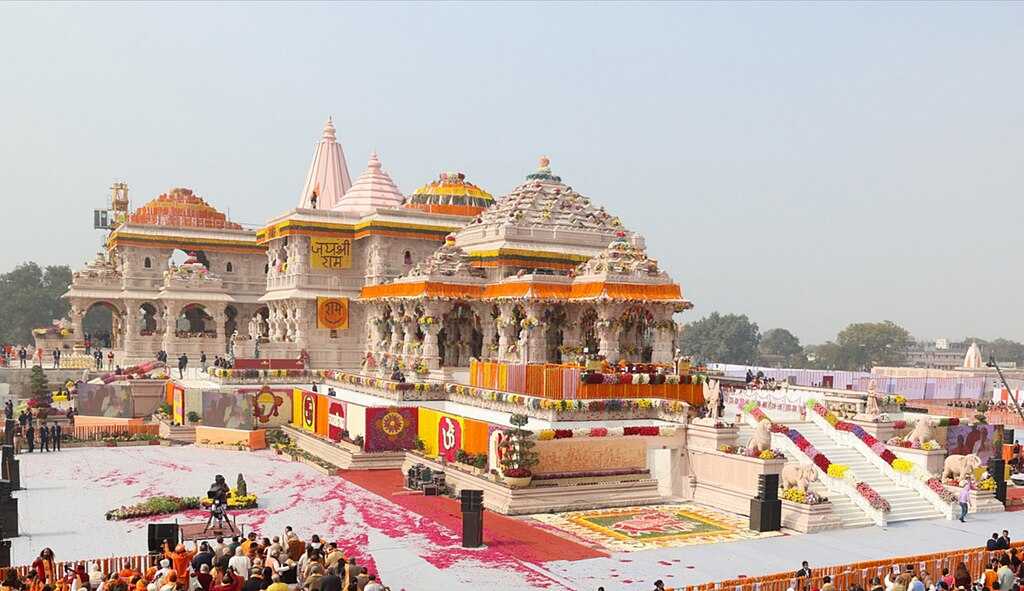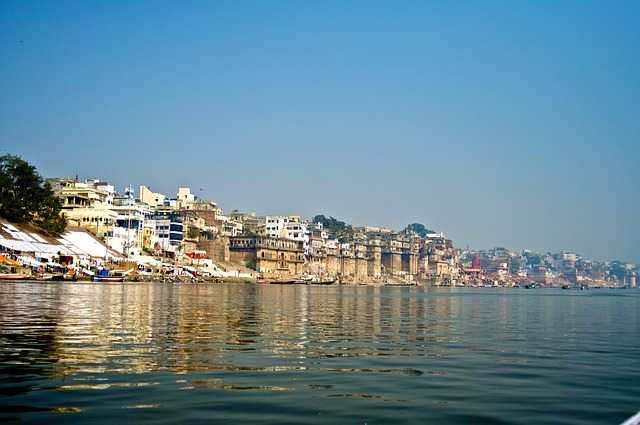
‘Ayodhya’ means ‘not to be fought’ or ‘invincible’; this meaning is attested by the Atharvaveda which uses it to refer to the unconquerable city of God. Ayodhya Dham, one of the seven most important pilgrimage sites for Hindus (Ayodhya, Mathura, Haridwar, Varanasi, Kanchipuram, Dwarkapuri and Ujjain) has a unique identity as the birth place of Hindu deity Ram. Though the historians have many different points of views about the birth date and birth place of Lord Ram but the most authentic among them is based on archeological and scientific evidences which confirm the date and time of birth of Lord Ram as January 10, 5114 BCE, 12:05 pm, and the place of birth is Ayodhya. Some people doubt about the date of birth being January 10 and we celebrate Ram Naomi in March-April, this confusion should be cleared. The reason for this is the concept of precision of equinox where 1 day is adjusted for every 72 years, thus over a 7200 years period it works to around 100 days between January 10 and April 15. Lord Ram was the seventh incarnation of Lord Vishnu who born in the 81 st. generation of Ikshvaku dynasty, also known as Suryavansh. Apart from Ram there were many prominent names in Ikshvaku dynasty as Harishchandra, Bhagirath, Raghu and Dasharath.
According to historians’ ancient capital of Kaushal, Awadh was called later Ayodhya and during the Buddha period it was named Saket. Ayodhya was mainly the city of temples, remains of many Hindu, Buddhist and Jain temples are found in the city even today. No doubt Ayodhya is one of the most valuable pilgrims for Hindus but Jain do respect Ayodhya equally because five Tirthankara including Adinath have their birth place here in Ayodhya. Buddhist also like Ayodhya for few months stays of Lord Buddha at this holy city. Ayodhya was established by one of the ancestors of Ram, Manu the son of Lord Sun, from that time till Mahabharat period Suryavanshi kings ruled here. Some inscriptions found in the ruins of temples and excavation done by archeological departments have evidences of visit of king Vikramaditya in the city and many grand temples, palaces, wells, lakes and gardens were built by him during his stay. History of Ayodhya has evidences in support of grand temple containing 84 pillars of black kasauti stones, was built by king Vikramaditya at the birth place of Lord Ram. Many kings visited Ayodhya time to time and renovated the temple as per requirement, an inscription about a king Pushyamitra Shung had been found, who had renovated it and organized two Ashwamedh Yagnas at the temple. Chandragupta II had made the capital of Gupta dynasty at Ayodhya and visited the temple at the birth place of Ram. The prosperity of the temples at the birth place of Ram and surroundings remained until a sad incident of destruction and robbery had been done by Mir Baqi, the general of Mughal emperor Babur. The temples were destroyed and mosque was built using the debris of the temples. Historical evidences collected during the excavation of the site done by archeologists Alexander Cunningham, A K Narain, B B Lal, B R Mani, and historian Hans Bakker tell the glorious past of Ayodhya as well as the destruction done by Mughal rulers.
The city Ayodhya is situated on the bank of river Sarayu in the biggest Bhartiya state Uttar Pradesh. It is the administrative headquarter of Ayodhya district and Ayodhya division of Uttar Pradesh. The city occupies an area of 121 square kilometers having population nearly 1.20 Lakh. The city is located at 26 ֯ N latitude and 82 ֯ E longitudes. Ayodhya has a humid subtropical climate, typical of central Bharat. Summers are long dry and hot, lasting from late March to mid June, with average temperature 36.6 ֯C, followed by rains lasting up to early October with average rain 1100 mm. and humid temperature nearly 29 ֯C. Winters are not so long, starting from November lasts up to January with average temperature 9 ֯C followed by pleasant spring for next three months with warm days and cool nights.
The identity of Ayodhya is not only as a district headquarters or as a division headquarters of one of the many districts or divisions of Uttar Pradesh state, but the identity of Ayodhya is the birth place of Lord Ram, the seventh incarnation of Lord Vishnu. The identity of Ayodhya became the dispute of the land of the birth place of Lord Ram, for which Hindus have had a long legal fight and many sacrifices for a long time. Let us discover the time line-


All Around the World Tours Dummy text ever since the 1500s, when an unknown printer took.
Immigration & Passport Help Dummy text ever since the 1500s, when an unknown printer took.
Private & Customized Tours Dummy text ever since the 1500s, when an unknown printer took.
All Around the World Tours Dummy text ever since the 1500s, when an unknown printer took.
Private & Customized Tours Dummy text ever since the 1500s, when an unknown printer took.
All Around the World Tours Dummy text ever since the 1500s, when an unknown printer took.
Immigration & Passport Help Dummy text ever since the 1500s, when an unknown printer took.
Private & Customized Tours Dummy text ever since the 1500s, when an unknown printer took.

Inspire you to explore India tours beyond the usual well-known locations.
Lorem ipsum dolor sit amet, consectetuer adipiscing elit. Aene an commodo ligula eget dolor. Aenean massa. Cum sociis the
Lorem ipsum dolor sit amet, consectetuer adipiscing elit. Aene an commodo ligula eget dolor. Aenean massa. Cum sociis the

Plan your day by day itinerary for your vacation with Private Car and Driver or Tour Packages.
Ayodhya is an ancient city in the state of Uttar Pradesh, India. It holds immense religious significance in Hinduism as the birthplace of Lord Rama.
Ayodhya gained worldwide attention due to the Ayodhya dispute, a political, historical, and socio-religious debate in India centered around a plot of land in Ayodhya. It was claimed by both Hindus and Muslims, with Hindus asserting it as the birthplace of Lord Rama and Muslims claiming it as the site of the historic Babri Masjid.
Ayodhya gained worldwide attention due to the Ayodhya dispute, a political, historical, and socio-religious debate in India centered around a plot of land in Ayodhya. It was claimed by both Hindus and Muslims, with Hindus asserting it as the birthplace of Lord Rama and Muslims claiming it as the site of the historic Babri Masjid.
The Ayodhya dispute revolved around the Babri Masjid, a mosque built in the 16th century by Mughal Emperor Babur, which was claimed by Hindus to be the birthplace of Lord Rama. The dispute led to communal tensions and eventually culminated in the demolition of the mosque in 1992, sparking nationwide riots.
Following the demolition, the site remained a point of contention, with both Hindu and Muslim groups claiming ownership. The legal battle over the land continued for decades, eventually leading to a landmark Supreme Court verdict in November 2019.